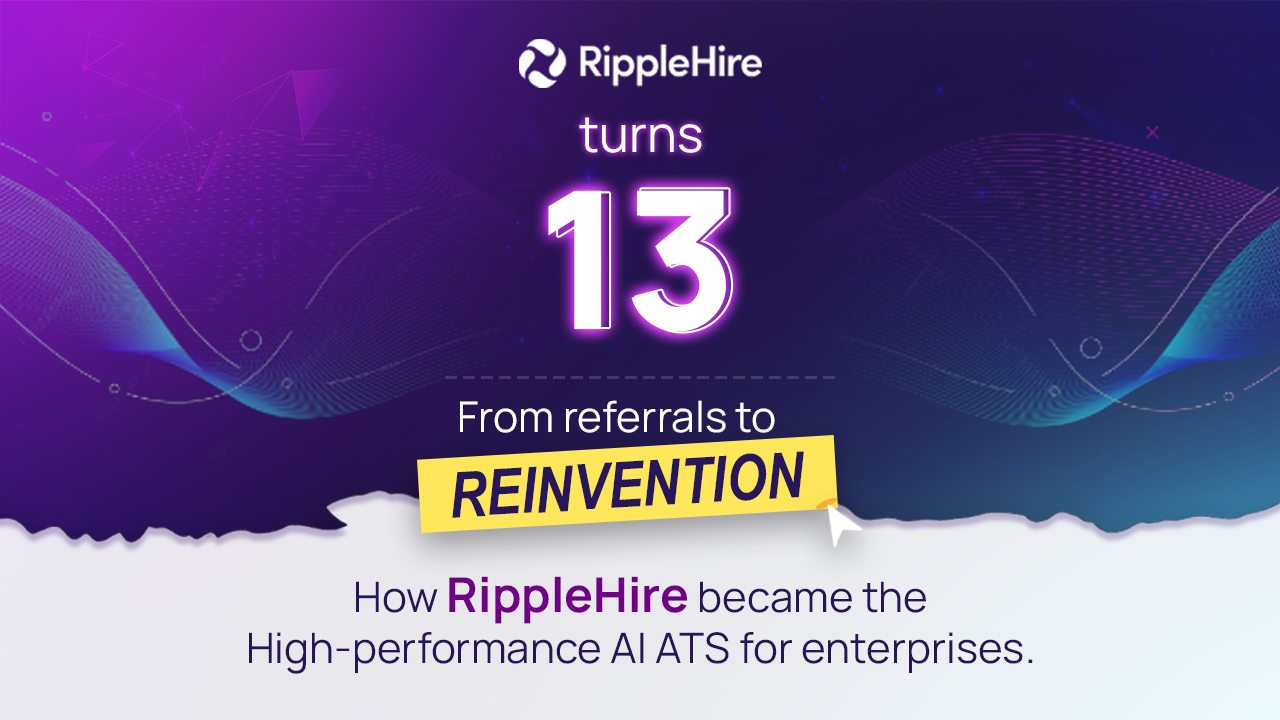How to Manage Drive Logistics for Seamless Hiring Days Across Venues, Tech, and Teams
Campus or volume drives often look smooth from the outside — well-planned booths, on-time interviews, smiling candidates. Behind that picture, though, is a maze of logistics. The wrong venue layout can delay interviews by hours. A missing power socket can stall your entire assessment center. And when tech or manpower falls short, even the best recruitment plans collapse under pressure.
This blog breaks down the building blocks of smooth drive logistics. Whether you’re running a 100-person walk-in or a 5,000-student campus drive, these basics decide whether your hiring day runs or stumbles.
Planning the venue for flow and comfort
Most recruitment drives fail not because of poor planning, but because of poor layout. A badly designed venue creates friction before the first interview even starts. Candidates wait too long, recruiters get lost in coordination, and panels lose time between rounds. The fix isn’t fancy infrastructure — it’s smart flow.
Think of your venue as a sequence, not just a space. Each zone should serve a single purpose and feed naturally into the next.
- Entry and registration: It should be easy to find and staffed with enough people to avoid crowding. Simple signboards and pre-numbered registration desks save precious time.
- Waiting areas: This needs basic comfort like chairs, water, and ventilation. Candidates who wait for hours in chaos walk into interviews drained and anxious.
- Interview and assessment zones: These should be separate from high-traffic areas. Noise and movement distract both candidates and interviewers.
- Communication point: A visible spot where updates, announcements, or slot changes are shared — ideally digital screens or loudspeakers for large drives.
One small oversight can break the rhythm. If interview rooms are spread across buildings, plan for escorts or clear markers. When power sockets are missing, assessment laptops die mid-test. These are details that don’t make headlines but decide how candidates remember your company.
For large campus drives, coordinate early with placement cells to get venue maps and power layouts. For walk-ins, visit the site a day in advance and run a mock setup. Check Wi-Fi strength, seating, lighting, and air flow. A quick 30-minute test often saves hours on the actual day.
Most importantly, keep space for flexibility. Extra tables, backup seating, or a private area for delayed panels give you room to adapt. The most efficient drives aren’t rigid; they flow because every person knows where to go and what happens next.
When the venue is designed around that movement, even a high-volume day feels calm. Candidates walk in confident, interviewers stay on schedule, and your team looks effortlessly in control.
Getting the tech backbone right
Technology is the invisible thread that holds a high-volume hiring drive together. When it works, everything feels smooth. When it fails, the whole day slows down.
Start with what absolutely needs to function without interruption:
- Reliable internet connectivity: Even a brief drop can freeze online assessments or delay registration. Always have a backup connection, preferably through a different network provider.
- Power supply and hardware checks: Laptops, routers, and projectors should be tested a day before. Carry extension cords and extra chargers. They sound trivial until someone’s system dies in the middle of a test.
- Digital registration and tracking: Paper lists get messy fast. A simple registration link or QR code that logs attendance directly into your system saves hours of manual sorting later.
- Audio and display setup: If you are addressing large groups, test sound clarity and visibility from the back row. Many drives lose candidate attention simply because the mic echoes or slides aren’t visible.
It helps to think in layers:
- Core tech (Wi-Fi, power, hardware),
- Operational tech (registration, assessments), and
- Experience tech (communication screens, candidate updates).
When these layers align, drives feel professional and predictable.
Some enterprises also use live dashboards to show real-time interview status or panel availability. It keeps recruiters and candidates informed without constant phone calls or chaos outside interview rooms. Even a simple shared sheet or Slack channel can do the trick for smaller setups.
Before the drive, create a short “tech checklist” for every team member. It should cover passwords, device login access, software updates, and data backups. On drive day, assign one person as the single point of contact for all tech issues so recruiters can focus on people, not troubleshooting.
When technology runs quietly in the background, your team looks sharp and in control. That calm, efficient candidate experience strengthens your employer brand far more than banners or giveaways ever could.
Getting your manpower mix right
A drive is only as efficient as the people running it. You can have the best venue and tech setup, but without a well-structured team on the ground, things fall apart fast.
Think of your manpower plan as three layers working together:
1. Core team
This includes recruiters, interview coordinators, and placement leads. They control the schedule, manage candidate flow, and handle last-minute changes. Ideally, this group should be small but empowered to make quick decisions on the spot.
2. Support crew
Volunteers, admin staff, or interns who manage registration desks, crowd flow, refreshments, and logistics. These roles don’t sound glamorous, but they decide how smooth your day feels.
- Rotate them between tasks to avoid fatigue.
- Keep a short “who does what” list visible on-site.
- Have one runner assigned to every 2–3 interview rooms for quick communication.
3. Interviewers and panel members
The people candidates actually meet. Panels need to know their schedules in advance and stick to them. A ten-minute delay by one interviewer can block an entire batch of candidates. Use a digital tracker or simple group chat to update panel availability in real time.
Staying in control during the drive
Even the best plans can go sideways once the drive starts. Someone’s running late, a laptop crashes, the crowd grows faster than expected. What separates smooth drives from chaotic ones is how quickly teams respond.
Keep your real-time coordination simple and visible.
Create a live communication channel
A WhatsApp group, Teams chat, or Slack channel for all core members works better than long calls. Keep it restricted to essential updates—panel free, candidate flow, lunch breaks, emergencies.
Use visual trackers
A shared Google Sheet or dashboard that shows which candidates are in which stage helps avoid confusion. Recruiters, panelists, and volunteers see the same information, so there’s no overlap or idle waiting.
Assign quick decision-makers
Have two or three people authorized to make real-time calls: reassign a panel, shift a slot, move a batch. Drives slow down when everyone waits for approval.
Short breaks and quick syncs matter more than they seem. A five-minute check-in every two hours keeps everyone aligned and prevents fatigue.
Real-time control isn’t about micromanaging. It’s about keeping visibility high and surprises low. When your team operates like that, even unexpected problems start to look like small adjustments instead of crises.
Streamlining your drive operations with RippleHire
Even the best planning can fall apart when too many moving parts depend on manual follow-up. Between scheduling panels, tracking attendance, sending updates, and handling assessments, a small miss can ripple across the entire day. That’s where technology steps in.
RippleHire helps enterprises run recruitment drives that stay organized from start to finish. Recruiters see exactly where each candidate is in the process, while interviewers get clear task prompts and reminders.
Automation takes care of repetitive coordination so your team can focus on the human side of hiring. Communication becomes consistent, feedback reaches the right people on time, and drive-day decisions move faster.
Book a demo with RippleHire and see how leading enterprises simplify hiring drives end-to-end.
FAQs
Why is logistics planning so important for hiring drives?
Even the best hiring strategy can fail if the logistics aren’t right. A poor venue layout, weak internet, or missing manpower can cause long delays and chaos. Good logistics make the day flow smoothly. Candidates move easily, panels stay on time, and recruiters focus on hiring instead of fixing problems.
How can I choose and set up the right venue for a hiring drive?
Pick a venue that supports easy movement and has separate areas for registration, waiting, and interviews. Visit it a day before the event, check Wi-Fi and power points, and test seating and lighting. Keep signs, backup chairs, and a help desk ready. When the space is clear and comfortable, candidates and interviewers stay calm and focused.
What kind of technology setup helps hiring drives run smoothly?
Stable internet and working hardware are non-negotiable. Use online registration links or QR codes instead of paper lists, and test laptops, routers, and projectors early. A simple live tracker or shared sheet keeps everyone updated on candidate progress. When tech works quietly in the background, the drive feels professional and stress-free.
How should I plan manpower for a large recruitment drive?
Divide your team into three groups:
-
Core team: recruiters and coordinators who make key decisions.
-
Support crew: volunteers managing flow and logistics.
-
Interviewers: panels that stay focused on assessments.
Assign clear roles, rotate people between tasks to avoid fatigue, and keep one quick communicator for every few rooms.
What helps teams stay in control during a hectic drive?
Create one live communication channel, like a WhatsApp or Teams group, for all key updates. Use a shared sheet to track where candidates are in the process. Give a few people authority to make quick decisions if plans change. Small sync breaks every few hours help everyone stay aligned and energized.
How can RippleHire make drive logistics easier?
RippleHire automates the repetitive parts of hiring drives — from registration and scheduling to feedback collection and communication. Recruiters get real-time visibility, interviewers receive reminders, and candidates move through stages smoothly. With everything tracked in one place, your team can focus on people, not paperwork.















